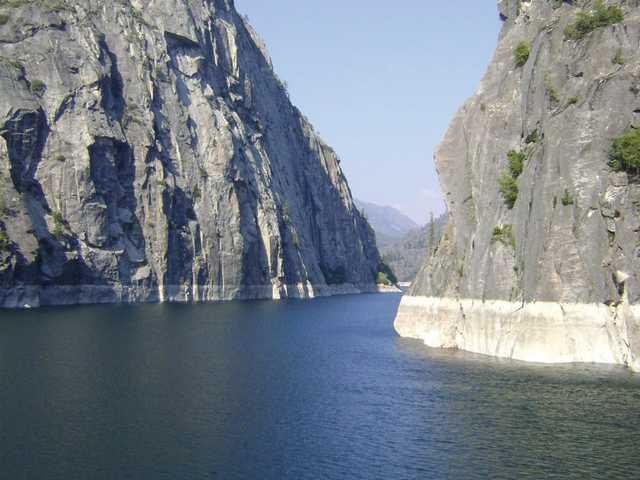The advantage that South San Joaquin Irrigation Districts holds in its bid to reduce retail rates in Manteca, Ripon, and Escalon is the Tri-Dam Project.
The SSJID is a 50-50 partner with Oakdale Irrigation District in the series of three dams and hydroelectric projects on the Stanislaus River.
And while the plan is not to necessarily use any of the electricity from Tri-Dam to serve customers locally, the district’s split of proceeds from the long-term contracts the project enters into with other agencies provides the financial wherewithal to help secure low-cost tax-free bonds.
The bonds would be used to acquire the local PG&E distribution system and make needed upgrades to improve service.
The 125 megawatts the Tri-Dam hydroelectric plants generate would, however, almost cover 100 percent of SSJID’s retail electricity needs.
A breakdown of electricity usage in the three cities and surrounding rural areas includes 54 percent for residential, 31 percent for agriculture, and 13 percent for commercial/industrial.
The 955 miles of power lines, 40,000 meters and three substations serving 130,000 people within SSJID’s 133 square mile service territory represents less than 1 percent of PG&E’s overall customer base.
The initial savings in the cost of retail electricity will be 15 percent below what PG&E charges.
The percentage of savings will grow over time.
Tri-Dam Project was
built during the 1950s
Plans for Tri-Dam Project were drawn up in the 1930s consisting of three dams — Donnells, Beardsley, and Tulloch — as well as three power plants and a seven-mile tunnel carved through rock.
Construction didn’t start until 1955.
When it was completed SSJID had three times the water storage than what the original dams provided at (Old) Melones and Goodwin. They also had a reliable source of income to pay for the system’s operations and maintenance as well as to retire bonds over 50 years.
Financing for the $52 million project was secured when Pacific Gas & Electric signed a contract with the two districts to buy electricity from the three dams through 2005.
Power sales at a rate established in 1955 essentially gave the two districts money to pay for the dam with additional cash to operate the system and help assist with improvements in their respective districts
Since the project was paid off and the PG&E contract ended, the districts in some years have split almost as much as $21 million to fund upgrades to water delivery systems as well as enhance power generation capabilities.
The project took less than three years to build. It was dedicated on June 15, 1958 at Beardsley Dam.
Three dams all built
without any funds from
state or federal sources
What was considered remarkable at the time — and even today — is the fact the Tri-Dam system was planned, financed, and constructed entirely by SSJID and OID without a penny from the state or federal governments.
When Donnells was completed in 1958, it was the fifth highest concrete arch dam in the western United States with an exposed dam face of 317 feet.
It was topped by Hoover Dam at 726 feet built in 1936, O’Shaughnessy Dam in Yosemite National Park at 430 feet built in 1923, Arrowrock Dam on the Boise River at 350 feet built in 1915, and Parker Dam on the Colorado River at 320 feet built in 1938.
The advantage of a double arch concrete dam is they get stronger as you put more water behind them.
That’s why Donnells peak water elevation is 4,916 feet — a foot below the top of the dam.
Other dams such as the earth-filled Beardsley Reservoir that is part of the Tri Dam Project have ultimate water elevations significantly lower than the top of the dam. At Beardsley the top water elevation is 3,297 feet as opposed to the dam’s elevation of 3,405 feet.
Donnells holds 64,325 acre feet of water, Beardsley holds 97,802 acre feet of water, and Tulloch Reservoir holds 64,332 acre feet of water behind a dam with an elevation of 5007 feet.
Tri Dam is headquartered in Strawberry off of Highway 108 in Tuolumne County.
To contact Dennis Wyatt, email dwyatt@mantecabulletin.com





